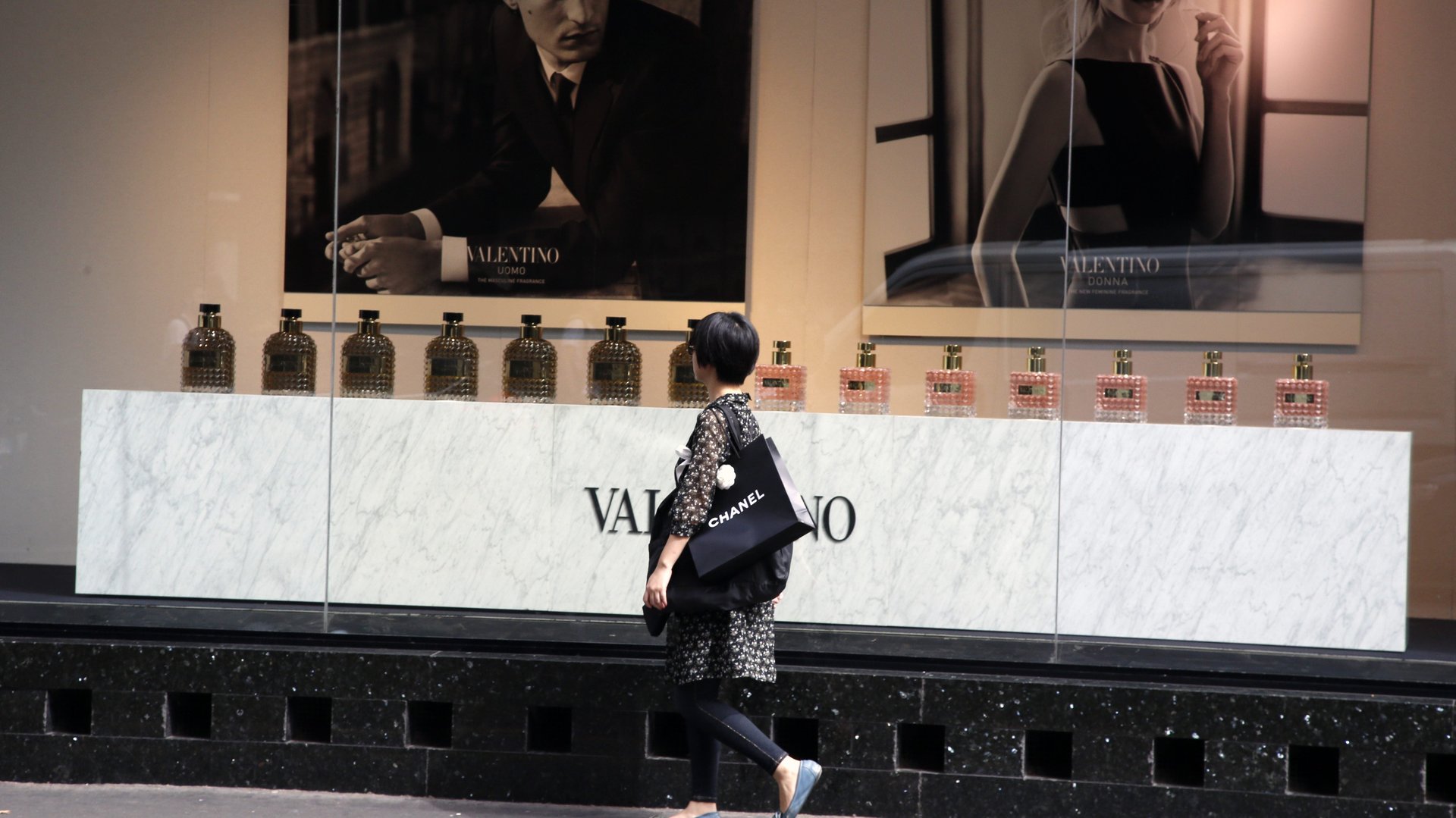One chart shows why Chinese tourists treat Europe as the world’s largest discount mall
Ask a boutique selling pricey luxury goods in France or Italy who their top customers are and the answer probably won’t be French or Italian buyers. More likely than not, their main source of sales are Chinese tourists on an international spending spree.


Ask a boutique selling pricey luxury goods in France or Italy who their top customers are and the answer probably won’t be French or Italian buyers. More likely than not, their main source of sales are Chinese tourists on an international spending spree.
Chinese customers are among the most important—if not the most important—clienteles of many of the big international luxury brands. Globally they account for 30% of all spending on personal luxury goods, but for years they’ve done most of their buying outside of China. One big reason they’re so eager to get their Louis Vuitton bags and Prada shoes while on vacation is it’s much, much more expensive to buy them back home. Shopping in Europe is so much cheaper that many Chinese shoppers have come to regard it as “the world’s largest in-season outlet,” as Bain & Company put it.
A recent research note to investors from Exane BNP Paribas broke down the price differential across different regions, and found that luxury goods in China cost about 21% more than the global average. In France and Italy, by comparison, they’re about 22% less.
Exane compared 4,846 products that were available in all markets in March 2017, and found that Balenciaga products were about 25% more expensive in China than in France. Louis Vuitton goods cost nearly 50% more, while Armani came in at about 70% more expensive.
The price gap is mainly the result of Chinese taxes and duties, with added yuan coming from exchange rates and the distribution costs for the individual brands in China, according to the Fortune Character Institute, which researches China’s elite.
European stores have become heavily reliant on their Chinese customers. Exane’s analysts noted that foreign purchases—not just by Chinese shoppers, but certainly driven by them—account for more than 70% of personal luxury sales in Italy and France, and more than 50% in the UK and Switzerland.
As well as big-spending Chinese tourists, the situation has fueled the growth of the daigou business, where shoppers in places such as Europe and the US buy goods on behalf of clients on the Chinese mainland.
The imbalance between Chinese shoppers buying abroad versus at home is finally shifting, however, if only slightly. Last year, for the first time since 2001, Chinese spending on luxury goods grew faster in China than abroad. The Chinese government has been working to crack down on daigou and get shoppers doing more of their buying at home, while terror attacks have put a damper on tourism to Europe.
The gap in price is also likely to shrink, according to Exane, though not very quickly. “We expect greater price convergence going forward on the back of middle class consumers driving demand and the price transparency offered by the internet,” the analysts wrote. “However, price gap reduction can only go as fast as EU stores shrink in the global luxury goods retail network mix—expect this to proceed in slow motion.”
China’s growing middle class may see progressively better prices at home, but in the meantime, the best deals still require a plane ticket.